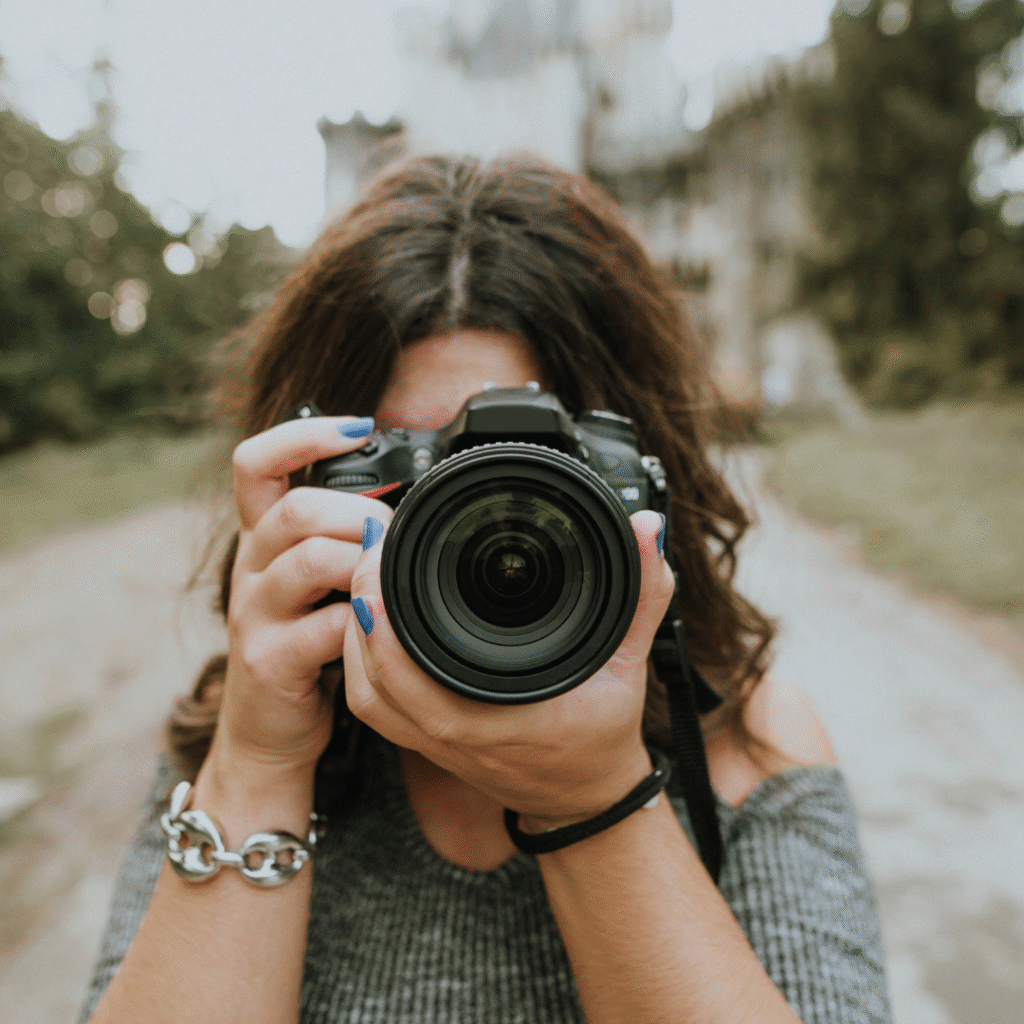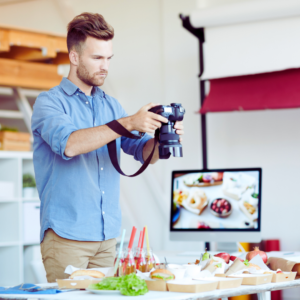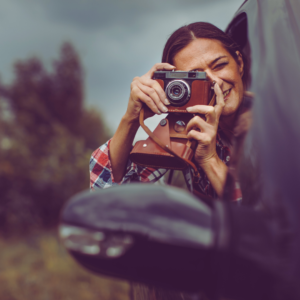For those starting in digital photography, choosing the right camera can feel overwhelming. Many beginners want a device that is user-friendly yet capable of producing great images. The Canon EOS Rebel T7 often stands out as the easiest camera to use for newcomers.
This camera provides a balance of automatic settings and manual controls, making it accessible for beginners while allowing room for growth. It’s built-in guided interface helps users understand various modes and functions without feeling intimidated. With the Rebel T7, capturing stunning photos becomes an attainable goal from day one.
In addition to its ease of use, the Canon EOS Rebel T7 delivers excellent photo quality, enhancing the learning experience. As a versatile tool for both everyday moments and special occasions, it empowers beginners to explore their creative potential in photography.
Choosing the Right Camera Type
Selecting the appropriate camera type is fundamental for beginners. Each type has distinct features and benefits that cater to different needs and preferences. Understanding these options will help in making an informed choice.
Point-and-Shoot Cameras
Point-and-shoot cameras are designed for simplicity and convenience. They typically feature a small, compact design, making them highly portable. With automatic settings, users can easily capture quality images without needing extensive technical knowledge.
Many point-and-shoot models offer features like Full HD video capability, allowing for versatile usage. Some advanced versions include Wi-Fi connectivity for easy sharing and editing. This camera type usually has a fixed lens, which limits creative options, but the ease of use is ideal for beginners seeking to learn photography basics.
DSLR Cameras
DSLR cameras provide a robust platform for those looking to explore photography in more depth. They use APS-C sensors or full-frame sensors, delivering exceptional image quality and performance. DSLRs offer interchangeable lenses, giving users the flexibility to adapt to various shooting scenarios.
While they might have a steeper learning curve, their manual controls allow for greater creative expression. Many models support 4K video, appealing to those interested in videography. The optical viewfinders also provide a direct view of the scene through the lens, enhancing the shooting experience.
Mirrorless Cameras
Mirrorless cameras combine advanced technology with a compact design. They differ from DSLRs by omitting the mirror mechanism, which allows for a lighter, smaller package while retaining high image quality, often using an APS-C sensor or full-frame variant.
With the capability to swap lenses, these cameras offer flexibility like DSLRs. They typically feature electronic viewfinders, providing real-time exposure preview. Additionally, many mirrorless options support 4K video capture, making them ideal for beginners interested in both photography and videography. The intuitive controls facilitate a smoother learning process.
Understanding Camera Basics
Understanding the fundamental elements of photography helps beginners grasp how to take better pictures. Key concepts include aperture, shutter speed, ISO, and focal length, each contributing to image quality and exposure.
Aperture
Aperture refers to the opening in a camera lens that controls the amount of light entering. It is measured in f-stops, such as f/2.8 or f/8. A lower f-stop number means a wider opening, allowing more light and resulting in a brighter image. Conversely, a higher f-stop number indicates a smaller opening, letting in less light.
Aperture also impacts the depth of the field. A wide aperture (e.g., f/2.8) creates a shallow depth of field, focusing on the subject while blurring the background. This effect is popular in portrait photography. A narrow aperture (e.g., f/16) increases depth of field, keeping more elements in focus, which is useful for landscape photography.
Shutter Speed
Shutter speed determines how long the camera’s shutter remains open, allowing light to hit the sensor. It is measured in seconds or fractions of a second, such as 1/1000 or 1 second. Faster shutter speeds freeze motion, which is ideal for capturing quick action shots.
Slower shutter speeds create motion blur, useful for effect or low-light situations. However, longer exposures can lead to camera shake, so using a tripod is advisable for stability. Beginners should experiment with different shutter speeds to see how it affects their images.
ISO
ISO measures the sensitivity of the camera sensor to light. A low ISO (e.g., 100) is suitable for bright conditions, while a higher ISO (e.g., 1600) is better for low-light environments. Increasing ISO can help avoid motion blur in dark settings but may introduce noise or graininess to the image.
Finding the right ISO balance is key. Beginners are encouraged to use the lowest ISO possible for the best image quality. Understanding how ISO interacts with aperture and shutter speed provides greater creative control over photographs.
Focal Length
Focal length, measured in millimeters (mm), affects how zoomed in or out a photograph appears. A lens with a short focal length (e.g., 18mm) captures wide-angle shots, making it suitable for landscapes. In contrast, a longer focal length (e.g., 200mm) allows for close-up images, ideal for wildlife photography.
Focal length also impacts perspective and composition. Shorter focal lengths create more exaggerated perspectives, while longer ones compress distance. Beginners should consider their photographic goals when choosing lenses, as different focal lengths offer distinct creative opportunities.
Key Features for Beginners
When selecting a camera as a beginner, certain features can significantly enhance the user experience. These features aid in simplifying photography while ensuring high-quality results.
Auto Mode
Auto mode is designed for simplicity and convenience. It allows the user to take photos without worrying about manual adjustments. In this mode, the camera automatically sets the exposure, ISO, and shutter speed based on lighting conditions.
Many beginner-friendly cameras include intelligent scene detection. This technology identifies if the subject is a landscape, portrait, or macro and adjusts settings accordingly. Additionally, some models offer scene presets for more control while still remaining user-friendly.
This feature is crucial for those who want to capture moments without the steep learning curve associated with manual settings.
Image Stabilization
Image stabilization helps reduce blurriness caused by camera shake. This is particularly important for beginners, who may not have steady hands or experience in handling cameras.
Cameras can feature built-in image stabilization (IBIS) or lens-based stabilization. IBIS compensates for movement by adjusting the sensor position, while lens stabilization achieves the same by modifying the lens elements.
With this feature, beginners can capture clearer images and smoother videos, especially in low light or at slow shutter speeds. The result is professional-looking photos with minimal effort.
Autofocus
Autofocus systems are essential for achieving sharp images effortlessly. Beginner cameras often come equipped with reliable autofocus technology that quickly locks onto subjects.
Many models use phase-detection or contrast-detection autofocus. Phase-detection offers rapid focusing, making it excellent for moving subjects, while contrast detection is best suited for still subjects.
Modern beginner cameras also feature face and eye detection. These capabilities ensure that portraits remain sharp, which is advantageous for novice photographers capturing friends and family.
Kit Lens
The kit lens is the default lens that typically accompanies beginner cameras. These lenses are often versatile and suitable for various photography styles.
A common type of kit lens is the 18-55mm zoom lens. It allows for wide-angle shots and moderate telephoto capabilities, enabling users to explore different perspectives without needing additional lenses.
Kit lenses are generally lightweight and easy to use. They provide an excellent starting point, offering good image quality without overwhelming new users with complex choices. Many come with image stabilization as well, further aiding in capturing steady images.
Additional Considerations
When selecting a beginner-friendly camera, several factors can enhance the overall experience. Battery life, connectivity options, and available accessories significantly influence usability, especially for travel photography and content creation.
Battery Life
Battery life is crucial for anyone venturing into photography, particularly for travel or events. Many beginner-friendly cameras offer around 300 to 600 shots on a single charge.
For digital single-lens reflex (DSLR) cameras, this number can be higher due to their optical viewfinders, which consume less power compared to electronic displays.
For those interested in continuous shooting or burst mode, look for cameras with larger batteries or energy-saving features. Vloggers may prefer cameras that can be powered while recording to avoid interruptions during long sessions.
Connectivity
Modern cameras often come with various connectivity options, enhancing usability for sharing and transferring images. Wi-Fi and Bluetooth capabilities allow users to connect the camera to smartphones and tablets easily.
This feature is particularly beneficial for content creators who need to upload images quickly to social media.
Some cameras also offer remote control functionality through apps, enabling users to take photos from a distance—a useful feature for travel photography or vlogging.
Accessories
Accessories can improve the beginner’s experience significantly. A sturdy tripod can stabilize shots and enhance low-light photography, making it essential for landscape and night photography.
Lenses are another important accessory. A versatile zoom lens may be ideal for capturing various subjects without needing to change lenses frequently.
For vonlogging, an external microphone can improve audio quality, while additional batteries and memory cards are crucial for longer shooting sessions.





